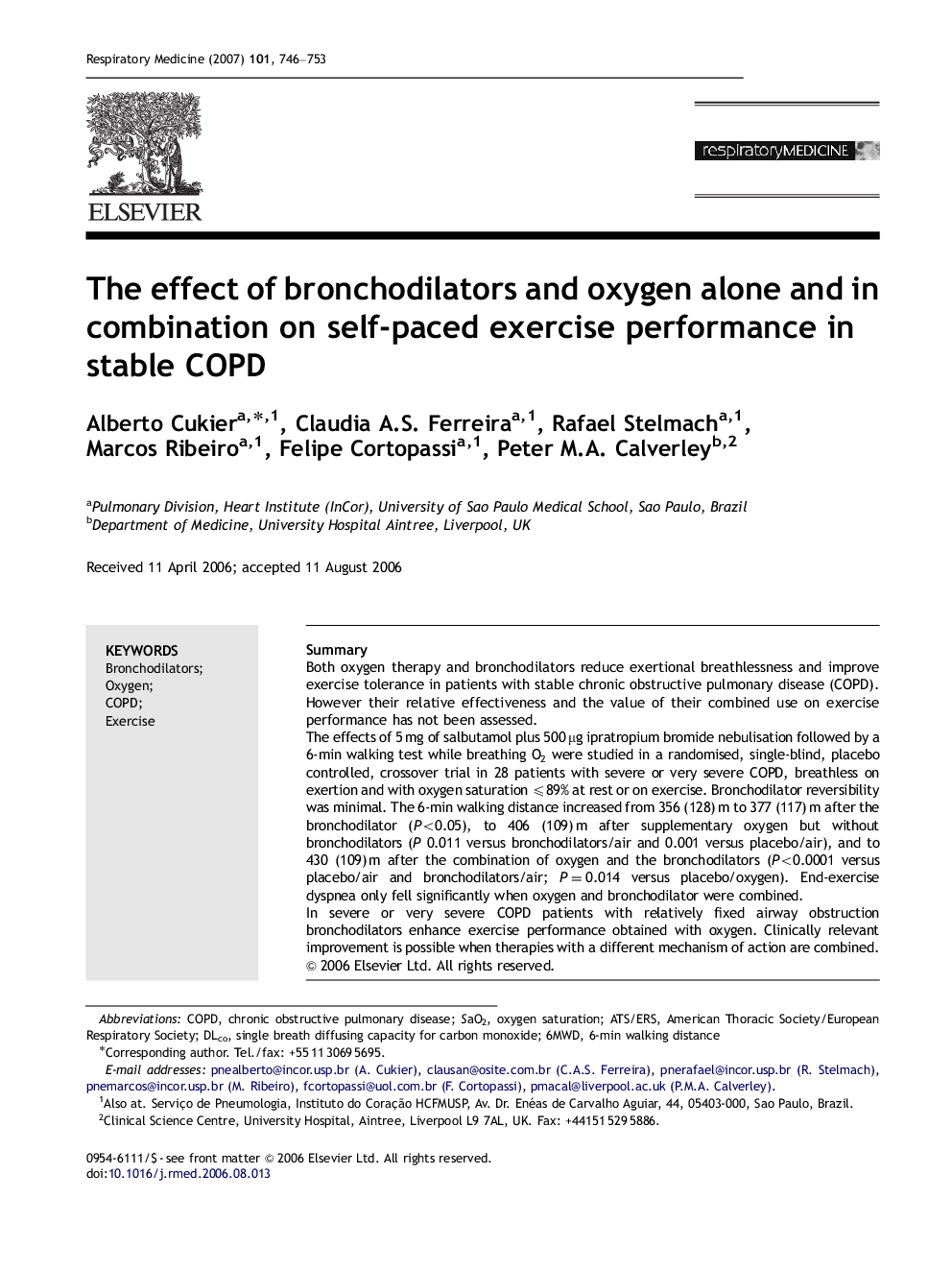| Article ID | Journal | Published Year | Pages | File Type |
|---|---|---|---|---|
| 4212446 | Respiratory Medicine | 2007 | 8 Pages |
SummaryBoth oxygen therapy and bronchodilators reduce exertional breathlessness and improve exercise tolerance in patients with stable chronic obstructive pulmonary disease (COPD). However their relative effectiveness and the value of their combined use on exercise performance has not been assessed.The effects of 5 mg of salbutamol plus 500 μg ipratropium bromide nebulisation followed by a 6-min walking test while breathing O2 were studied in a randomised, single-blind, placebo controlled, crossover trial in 28 patients with severe or very severe COPD, breathless on exertion and with oxygen saturation ⩽89% at rest or on exercise. Bronchodilator reversibility was minimal. The 6-min walking distance increased from 356 (128) m to 377 (117) m after the bronchodilator (P<0.05), to 406 (109) m after supplementary oxygen but without bronchodilators (P 0.011 versus bronchodilators/air and 0.001 versus placebo/air), and to 430 (109) m after the combination of oxygen and the bronchodilators (P<0.0001 versus placebo/air and bronchodilators/air; P=0.014 versus placebo/oxygen). End-exercise dyspnea only fell significantly when oxygen and bronchodilator were combined.In severe or very severe COPD patients with relatively fixed airway obstruction bronchodilators enhance exercise performance obtained with oxygen. Clinically relevant improvement is possible when therapies with a different mechanism of action are combined.
